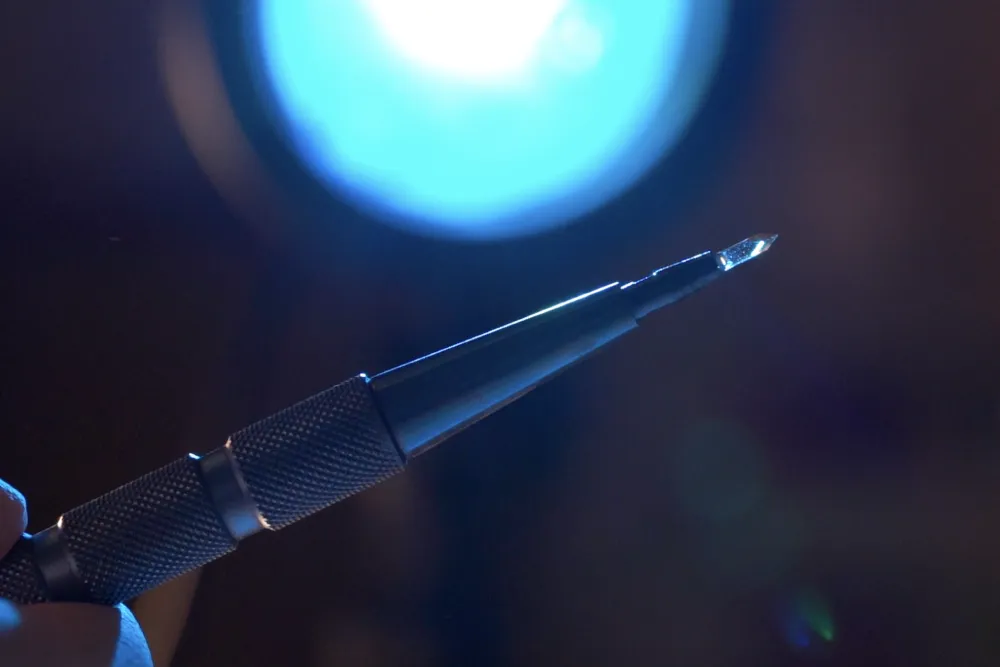FUE (Follicular Unit Extraction) is one of the most popular and modern techniques among hair transplant methods. This method involves individually extracting hair follicles from the donor area and transplanting them to the balding or thinning area. As a minimally invasive procedure, FUE is widely preferred worldwide due to its natural results, quick recovery, and scarless outcome. In this article, we will provide detailed information about FUE hair transplant, how it is performed, its advantages, risks, and frequently asked questions.
What is FUE Hair Transplant?
FUE is a hair transplant method where hair follicles (follicular units) are extracted one by one from the donor area (usually the back of the head) using a specialized micro-motor or manual tool and transplanted to the recipient area. Unlike other hair transplant methods, FUE does not require stitches or incisions, making it less invasive. This technique is used to treat hair loss, baldness, or thinning hair in both men and women.
FUE hair transplant is particularly effective for common hair loss conditions like Androgenetic Alopecia (male pattern baldness). It is also used for aesthetic procedures such as eyebrow, beard, and mustache transplants.
How is FUE Hair Transplant Performed?
FUE hair transplant is a meticulously planned process that involves several stages. Here is a step-by-step breakdown of the procedure:
1. Consultation and Planning
The hair transplant process begins with a consultation with a specialist. During this stage:
-
The extent of hair loss is assessed (using tools like the Norwood scale).
-
The suitability of the donor area (usually the nape) is evaluated.
-
The number of grafts to be transplanted is determined.
-
The patient’s medical history is reviewed, and expectations are discussed.
-
The hairline design is planned.
2. Donor Area Preparation
The donor area (typically the nape or sides of the head) is shaved, and local anesthesia is applied to ensure the patient feels no pain during the procedure. The hair follicles in the donor area are genetically resistant to shedding, making them ideal for transplantation.
3. Extraction of Hair Follicles
In the FUE method, hair follicles are extracted individually using a micro-motor or manual punch tool. Each follicular unit (containing 1-4 hair strands) is carefully harvested. This process takes approximately 2-4 hours, depending on the number of grafts.
4. Preparation of Grafts
The extracted hair follicles are stored in a special solution to preserve their viability. The grafts are examined under a microscope and prepared for transplantation.
5. Recipient Area Preparation
Local anesthesia is applied to the recipient area (the balding or thinning region). Tiny channels (slits) are then created where the hair follicles will be placed. The angle and depth of these channels are critical for achieving a natural appearance.
6. Transplantation of Hair Follicles
The prepared grafts are carefully placed into the opened channels one by one. This is the most delicate part of the procedure, requiring expertise to ensure a natural hairline. The transplantation process can take 3-5 hours, depending on the number of grafts.
7. Recovery and Aftercare
After the procedure, the patient is given detailed aftercare instructions. The first few days may involve some sensitivity, but since FUE is minimally invasive, recovery is typically quick. Crusting resolves within 7-10 days, and new hair growth begins within 3-4 months.
Advantages of FUE Hair Transplant
FUE hair transplant offers several advantages over other methods:
-
Scarless Procedure: Since there are no stitches or incisions, the donor area shows no visible scars.
-
Natural Results: Hair follicles are transplanted at natural angles, ensuring an aesthetic appearance.
-
Quick Recovery: Patients can usually return to normal activities within 1-2 days.
-
Minimal Pain: Local anesthesia ensures a pain-free procedure and recovery.
-
Versatility: Suitable for both small and large areas of hair loss.
Risks and Side Effects of FUE Hair Transplant
Like any surgical procedure, FUE hair transplant carries some risks:
-
Infection: Though rare, infection can occur if proper hygiene is not maintained.
-
Graft Loss: Some transplanted follicles may not survive.
-
Numbness: Temporary loss of sensation in the donor or recipient area may occur.
-
Unnatural Appearance: If performed by an inexperienced team, the hairline may look artificial.
Choosing an experienced clinic and specialist is crucial to minimize these risks.
Who is Eligible for FUE Hair Transplant?
FUE hair transplant is suitable for:
-
Individuals with male pattern baldness (Androgenetic Alopecia).
-
Those with a receding hairline.
-
People with thinning hair.
-
Individuals seeking eyebrow, beard, or mustache transplants.
-
Those with sufficient donor hair (usually from the nape or sides).
However, FUE may not be suitable in cases of:
-
Insufficient donor hair.
-
Uncontrolled diabetes or blood clotting disorders.
-
Active skin conditions (e.g., psoriasis).
Recovery Process After FUE Hair Transplant
The recovery process after FUE hair transplant depends on the patient’s adherence to aftercare instructions. Key points include:
-
First 3 Days: Avoid water contact with the recipient area and keep the head elevated.
-
Crusting: Crusts typically fall off within 7-10 days. Avoid scratching the area.
-
Hair Washing: The first wash is usually done at the clinic using a special shampoo.
-
Sports and Heavy Activities: Avoid strenuous exercise for 2-4 weeks.
-
Hair Growth: New hair begins to grow within 3-4 months, with full results visible in 12-18 months.
FUE Hair Transplant Costs
FUE hair transplant costs vary depending on the country, clinic, surgeon’s experience, and the number of grafts. Turkey is a global leader in hair transplant tourism due to its affordable prices and high-quality services. On average, the cost for 1500-4000 grafts ranges between $2,000 and $5,000. For precise pricing, contact the clinic directly.
Frequently Asked Questions (FAQs)
1. Is FUE hair transplant painful?
No, the procedure is performed under local anesthesia and is generally painless. Mild discomfort after the procedure can be managed with painkillers.
2. How long does FUE hair transplant take?
The procedure takes 6-8 hours, depending on the number of grafts. A single session can transplant 4000-5000 grafts.
3. Will the transplanted hair fall out?
Yes, transplanted hair may experience “shock loss” within 2-4 weeks. This is normal, and new hair will begin growing within 3-4 months.
4. Does FUE hair transplant leave scars?
FUE is minimally invasive and leaves no noticeable scars. Tiny dots may appear in the donor area but are typically invisible.
5. When can I return to normal activities?
Most patients can resume work within 1-2 days. Full recovery may take a few weeks.
6. Is FUE hair transplant permanent?
Yes, since the donor hair follicles are genetically resistant to shedding, the transplanted hair is generally permanent.
7. Can women undergo FUE hair transplant?
Yes, women can have FUE hair transplants, especially for thinning hair or hairline correction.
FUE hair transplant offers a modern and effective solution to hair loss. With an experienced clinic and proper care, natural and lasting results are achievable. Consult a specialist for more information.





No comments yet. Be the first to comment!